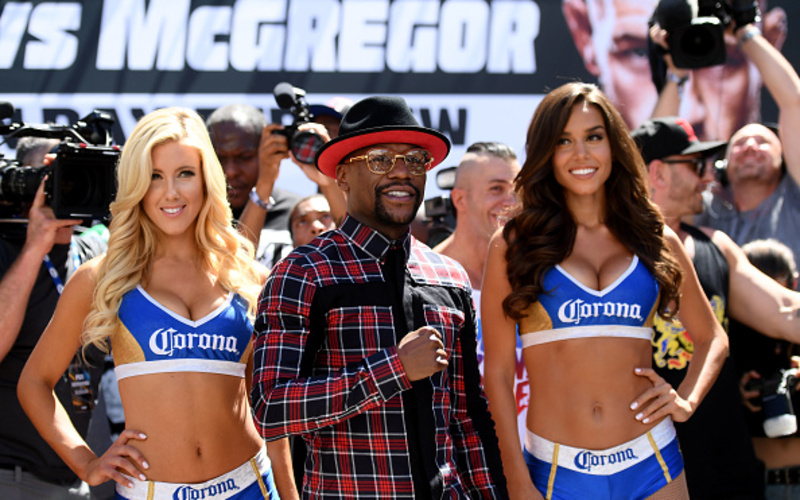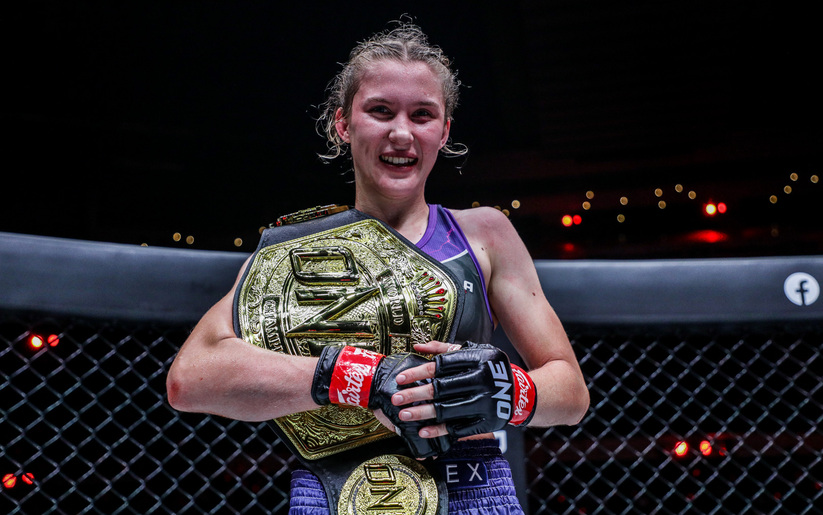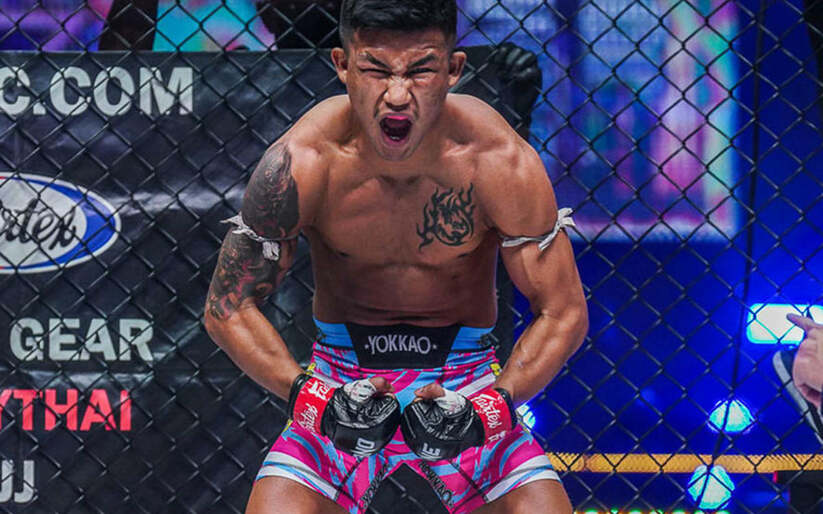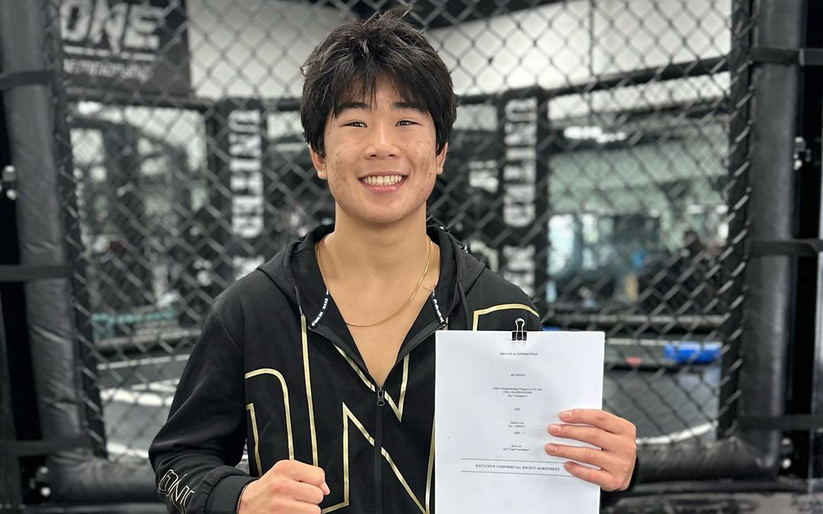In our last installment, we examined the infighting of Floyd Mayweather. Today we’ll explore methods his opponents have used to exploit his tendencies.
Looking for weaknesses in a fighter like Floyd Mayweather is a difficult task. The very fact that we have to look at losing efforts, in order to piece together routes to success, speaks to that difficulty. He doesn’t take himself out of a strong stance without intention. He doesn’t forget his guard in exchanges. The truth is, Mayweather has very little clearly-defined weaknesses. He can do everything with a high degree of skill, like remaining defensively sound and offensively sharp in all areas.
If there’s nothing that he does poorly, opponents must rely on taking away the things he does best. Every fighter, including the greats among all combat sports, have tendencies that can be exploited. Areas he prefers to work in, or certain techniques he likes to throw, that can be attacked, exploited or taken away from him.
Mayweather prefers to move around on the outside and snipe pot-shots at his opponents. On the inside, he likes to ruthlessly control his opponent’s head to deny him offensive opportunities. He’s reluctant to engage in pocket exchanges unless he can secure himself a positional advantage. These are all habits that can be planned for, and exploited.
Cracking the Crab’s Shell
Due to his proficiency in shoulder rolling, Mayweather’s left side is near impenetrable unless he’s caught squared up (which rarely happens). The right side of his body and face however, are more apt to be exploited due to his glove and forearm being responsible for covering that side. He’s proven to be open for the left hook to the body on numerous occasions. His right hand drifts high in exchanges, waiting on the left hook (or straight against a southpaw), leaving an opening to the body below his forearm.
This opening is even more pronounced against a southpaw. When they step deep outside his lead leg, Mayweather is more concerned with guarding against the straight then protecting his body.
The positioning of his rear hand can be manipulated. Jose Luis Castillo hooks the body to bring Mayweather’s hand down, before going back up top and landing a clean hook to the head. Note that Castillo enters with a body jab, which Mayweather reaches to parry, bringing us to our next point.
Mayweather can be a bit of a perfectionist at times. While many fighters operate on the principle that it occasionally makes sense to take punches to give them, Mayweather seeks to defend everything thrown at him. This can lead to him exposing himself by parrying body jabs.
Mayweather’s primary defense to the right hand relies on his shoulder being rotated inward to cover his chin. Reaching out to parry the body jab causes his shoulder to rotate slightly in the opposite direction, exposing slight daylight for that right straight. Of course, if he leaves the body jab alone, opponents can keep picking at it and scoring (a principle that Mayweather exploits to greatly effect himself).
Shane Mosley famously tagged Mayweather after frustrating him with the body jab. Note the slight squaring in Mayweather’s shoulders when he reaches out to parry it, and the opening that gives Mosley to shoot his right hand through. Fortunately for Mayweather, he was able to buy some recovery time by grabbing onto Mosley’s glove.
Marcos Maidana used the body jab to back Mayweather up to the ropes to set up his flurries. In the second sequence he lands a straight to the body as Mayweather tries to counter the body jab with his lead hook.
Mayweather’s bladed stance presents his back to his opponent and with it, his kidney on the left side. Targeting the kidney is technically illegal in boxing, but Mayweather himself has never cared too much about what is or isn’t technically illegal. You can see Maidana going for the kidney in the above clip when Mayweather rotates his shoulder inward.
Pressure
The classic method of taking away an outfighter’s weapons of choice is by taking away the space he likes to work with. Indeed, many of Mayweather’s toughest fights have come against opponents who looked to crowd him, take away his space, and force him onto the ropes. We’ll focus more heavily on the Maidana fight, since that represents the most current version of Mayweather that struggled with effective pressure.
Maidana would often change levels and come in underneath Mayweather to push him back from a place of superior leverage.
This lead nicely into counter hooks to the body when Mayweather tried to use his jab to back Maidana off.
https://gfycat.com/ColorfulOrdinaryAfricanwilddog
Maidana also landed his body-shot counters when he had Mayweather on the ropes, waiting for an elbow to open before slamming in a hook or catching a few shots on his guard (or face) before returning one to the body.
In our breakdown of Mayweather’s ringcraft, we explored how he attempts to draw out a committed punch on the ropes, before ducking it, and pivoting 180 degrees to the inside on his lead foot in order to get off the ropes. Maidana shut this pivot down almost completely when he had Mayweather on the ropes throughout both fights.
https://gfycat.com/AmusedSoulfulFunnelweaverspider
When Mayweather folds over his rear hip, Maidana responds by throwing short, choppy left hooks that create a barrier, impeding Mayweather’s motion. The hooks force Mayweather upright – or leave him halfway through his dip – long enough for Maidana to get his hands on him and physically push him back onto the ropes.
https://gfycat.com/BonyOffbeatGuineapig
Maidana also found success playing Mayweather’s game against him, controlling the head and tying him up when he ducked in.
On the inside, Maidana would dig the top of his head into Mayweather’s face and push forward, straightening Mayweather’s posture. Because Mayweather’s defense on the ropes relies on pulling back and ducking low in sequence, Maidana’s head pressure removed a lot of his defensive options and forced him to rely on his forearms. With Mayweather’s body pushed back on the ropes, he had no room to pull his weight back, and the head in his face created a barrier that prevented him from ducking.
https://gfycat.com/WholeHighlevelArmadillo
Maidana forces Mayweather into an upright stance with his head, exposing the body as a target. He would also attack with high-angle, palm-down overhands that bypassed Mayweather’s lead shoulder. They don’t have the torque of an overhand thrown with full hip connection, but they’re much more difficult to shoulder roll or duck.
https://gfycat.com/BlackandwhiteKindBushsqueaker
Maidana also had success manipulating the position of Mayweather’s rear hand, slamming hooks to the body to open up hooks and uppercuts to the head, as well as mixing in the overhand right.
But we can’t talk about Mayweather’s struggles in the first Maidana fight without mentioning the adjustments he made to take a comfortable decision in a rematch only four months later. In the second fight, Mayweather was more urgent in keeping himself off the ropes – changing directions rapidly, using the threat of his counters, and taking control of the clinch exchanges to keep Maidana from cutting him off. He targeted the body more often to impede Maidana’s forward movement and prevented him from ducking under with counters. Of course, referee Kenny Bayless didn’t help Maidana’s chances by separating the two every time they came within sniffing distance.
Patience
While Maidana found success by getting in Mayweather’s face and making the fight ugly, Miguel Cotto went the opposite route and looked to box with Mayweather. Cotto didn’t come close to winning the fight, but he did succeed in making himself a tough out.
Instead of swarming when he had Mayweather on the ropes, Cotto would exercise patience and pick his shots. Mayweather likes his opponents to commit when they have him on the ropes, because they end up hitting shoulder and wasting their shots, or giving him opportunities to counter and slip out. Cotto would often wait until Mayweather opened himself up to commit, which allowed him to make his punches count.
https://gfycat.com/TiredTemptingEquestrian
In the first sequence, Cotto waits for Mayweather’s shoulder to open up before throwing the right hand. In the second sequence, he throws a non-committal lead hook to get Mayweather pulling his head back, before exploiting Mayweather’s posture by angling off with his jab.
Cotto enters with a four-punch combination and feints a jab after, folding over his lead hip as if he’s about to throw a straight, or load up a big lead hook. Mayweather ducks low in response. Instead of sending a committed punch over Mayweather’s head, Cotto hops back to create enough distance to land a short hook.
One characteristic of a heavily bladed stance is that it facilitates quicker linear movement, but hampers lateral movement. Due to Mayweather’s superb distance control and positioning, it’s incredibly difficult to catch him out of position but, when opponents are able to take a dominant angle on him, they can crack him while he turns.
Cotto had success attacking the inside angle, pivoting to face Mayweather’s center line and jabbing as he turned.
Here Cotto attacks the outside angle. He uses a jab to get Mayweather ducking while he steps outside the lead foot, taking a stutter-step to further clear the lead foot before pivoting off. Mayweather turns to face Cotto and eats a lead hook.
Unpredictability
Mayweather’s defense works like a flow-chart, with multiple options for whatever threat his opponent can offer, depending on their relative positions. If an opponent feeds him an input that he’s expecting, the likely output involves missing and getting hit in return. However, by confusing the inputs, it’s possible to get him reacting to one thing when really something else is coming.
Manipulating rhythm is a perfect example of confusing the inputs. The concept is simple in theory, but very difficult in execution. If you consistently throw a three-punch combination with the same amount of time between each punch – a full beat – your opponent will start to expect that timing. Once he’s waiting on that timing, you can make one of the punches come slightly slower or faster in order to throw off his reactions.
https://gfycat.com/WealthyGreatAmericancrayfish
Castillo changes levels and enters with a lead hook aimed at Mayweather’s head. A moment later, Castillo repeats the setup on his lead hook, but this time he waits for Mayweather to react before going downstairs. Mayweather shoves him off and he changes levels to enter again, this time with an overhand right. Mayweather looks to shoulder roll the overhand and counter with an uppercut, but Castillo holds off and delays the overhand slightly. Instead of hitting shoulder and eating the counter uppercut, Castillo’s overhand comes after Mayweather’s shoulder has re-opened and they land simultaneously.
Mayweather also famously struggled with Emanuel Augustus, an underrated journeyman who excelled at mixing up his rhythm and punching on half-beats.
The Southpaw Straight
Perhaps the most common weakness cited in Mayweather’s defensive system is the southpaw straight. It’s true that in an open stance matchup, the rear shoulder of Mayweather’s opponent falls between his. This means that the straight has a path to his chin unobstructed by his lead shoulder. Since Mayweather rarely uses his lead hip on defense, he lacks the ability to fold over it and roll the straight off his rear shoulder. But the only way it makes sense to view the southpaw straight as a large gap in Mayweather’s capabilities, is if you focus only on the shoulder roll, and ignore his depth of defensive skill and multitude of tactics for defusing it.
https://gfycat.com/KaleidoscopicPeskyEarthworm
Mayweather struggled with the speed of Zab Judah in the early rounds, famously eating a clean straight that sent him reeling. However, he was later able to adjust and block the straight down the middle or slip outside it.
Although Mayweather plays a high guard more often against southpaws, he still has plenty of methods to defend the straight from his typical hand position. Conor McGregor has made a career out of landing the inside angle straight, pivoting to face opponents when they step outside his lead leg. Mayweather will use that same pivot and counter in response to his opponent angling out to land their own straight.
Victor Ortiz steps outside Mayweather’s lead leg, shortening the path of his straight. In response, Mayweather pivots to face his center line while squaring him up, and lands his own straight.
https://gfycat.com/UnfoldedExemplaryBabirusa
Mayweather will also parry the straight with his rear arm or pull his head back, causing it to fall short.
When opponents are standing in front of Mayweather at his preferred distance, he can simply pull his head back or retreat to make the straight miss. In order to reliably land it, they first have to close distance or take an angle. Prevention is better than cure, and it’s in this step that Mayweather is often able to kill the straight before his opponents can even throw it.
https://gfycat.com/BriefFantasticImperatorangel
In the first sequence, Ortiz tries to take an angle outside Mayweather’s lead foot, but Mayweather backs Ortiz off with his jab as he circles out. In the second sequence, Robert Guerrero reaches with his jab to close the distance and put himself in position to land the straight. However, Mayweather steps back and intercepts the straight with a counter.
Mayweather vs McGregor
We’ve avoided discussing the upcoming fight between Floyd Mayweather and Conor McGregor. However, the matchup seems relevant while we’re laying out the paths others have taken to find success against Mayweather. The first thing to know about McGregor’s game is that it’s built around landing his left hand, and he has a multitude of tactics to facilitate that.
McGregor utilizes an effective pressure game, cutting the cage well with his footwork and pushing opponents back with feints. Pressuring Mayweather will likely be McGregor’s best chance of consistently putting himself in position to land punches. The ring makes it easier to implement a pressure game, with it’s smaller surface and defined corners compared to the UFC’s Octagon.
In order to push Mayweather to the ropes, McGregor will have to contend with his incredible footwork and distance management. A far cry from Eddie Alvarez, who spent their entire fight circling mostly in one direction with little attempt to throw McGregor off his position. Mayweather will constantly change directions to feint his man out, and can land precise counters as McGregor steps in on him.
If he does succeed in getting Mayweather to the ropes, converting that into a successful offense is no easy task. Not only is Mayweather difficult to hit clean even by boxing legends with his back to the ropes, he excels at using his opponent’s committed punches as opportunities. McGregor opening up on Mayweather will give the latter openings to land counters, tie up, or duck under and pivot out.
Counters are another important delivery system for McGregor’s left hand. One of the most versatile and skilled counterpunchers in MMA, his trademark punch is the inside angle straight. He’ll bait opponents into taking a committed step outside his lead leg, before pivoting into them and landing the straight across the plane of their body. He displayed another wrinkle in his first fight with Nate Diaz, and showed that he can close the distance on his counters as well, slipping inside or outside the jab and coming back with hooks or overhands. However, constantly closing the distance and expending energy sapped his gas tank, which lead to a second-round submission loss. In their rematch, McGregor used leg kicks to force Diaz to come to him and landed pull counters when Diaz jabbed.
In our breakdown of Mayweather’s offense, we looked at the adjustments to his punching form, and ability to disguise punches that make landing counters on him a daunting task. Juan Manuel Márquez is known for his exceptional counter-punching skill and had little for Mayweather. No judge gave Marquez more than two rounds on their scorecard.
At range, McGregor is defensively sound but hittable, while Mayweather could not accurately be described as “hittable” even while facing elite boxers. Judah had the most success of Mayweather’s southpaw opponents, and he landed his straight largely on the strength of his lead hand to set it up. McGregor’s lead hand has historically been an afterthought, used to feint and find openings to land the left, but rarely thrown with intention. He displayed an improve jab and lead hook in the second Diaz fight, but a year of work on the lead hand is unlikely to produce significant results against a boxer as skilled as Mayweather.
Some have speculated that McGregor’s best chance is to get inside and rough Mayweather up. McGregor’s offense from the clinch in MMA has been limited to a few angle-out elbows, while Mayweather has made a career partially out of controlling and damaging his opponents on the inside. It’s hard to say how much McGregor’s work in MMA – which include takedowns, knees, and elbows – says about his clinch game in boxing. Mayweather, on the other hand, is one of the best infighters in boxing and has an obvious edge in experience with the context of boxing clinch work.
Mayweather is old for a professional athlete at 40, but he was old at 38 when he controlled Andre Berto with ease.
In short, I can find no reason for McGregor to do well. The truth of the matter is that signing the contract to fight Mayweather is likely to be his greatest accomplishment in boxing, and what an accomplishment it is.
So, can the biggest superstar in Mixed Martial Arts dethrone the greatest boxer of a generation? It’s unlikely that he can. But he does get to try, and that’s the most astonishing, peculiar thing about this fight.
Main Photo
Embed from Getty Images



